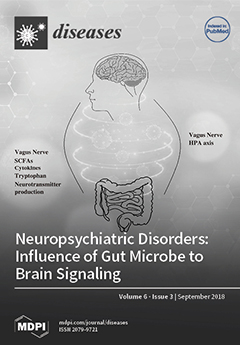There has been a progressive rise in the incidence of blood stream infections (BSI) caused by multidrug-resistant Gram-negative organisms (MDR GN), which cause increased morbidity and mortality. For this reason, recent studies have focused on risk factors of acquisition of carbapenemase-producing Enterobacteriaceae and
[...] Read more.
There has been a progressive rise in the incidence of blood stream infections (BSI) caused by multidrug-resistant Gram-negative organisms (MDR GN), which cause increased morbidity and mortality. For this reason, recent studies have focused on risk factors of acquisition of carbapenemase-producing Enterobacteriaceae and extended-spectrum beta-lactamase producers. However, there is limited data on risk factors for BSI caused by AmpC-producing Enterobacteriaceae (AmpC EC), especially in low prevalence settings such as Australia. This study was performed to identify risk factors for acquisition of AmpC
E. coli, using a retrospective matched case control design over a 3-year period. Patients with BSI caused by AmpC
E. coli were matched with controls (third generation cephalosporin susceptible
E. coli) by age and site of infection (
n = 21). There was no significant difference in age, sex, clinical outcome, time to onset of BSI, recent antibiotic use (last 3 months), comorbidities (type 2 diabetes mellitus, renal failure) intensive care unit admission, underlying hematological condition, immunosuppressant use, APACHE II score, or any recent urological procedures (within last 3 months) between the two groups. On univariate analysis, the AmpC
E. coli group were more likely to have had a surgical procedure in hospital and lived in a residential aged care facility. On multivariate logistic regression analysis, a recent surgical procedure was associated with the onset of AmpC
E. coli BSI (Odd’s Ratio (OR) 4.78,
p = 0.034). We concluded that in a relatively low prevalence setting such as Australia, AmpC
E. coli BSI is potentially associated with surgery performed in hospital due to previous antibiotic exposure and longer hospitalization.
Full article





